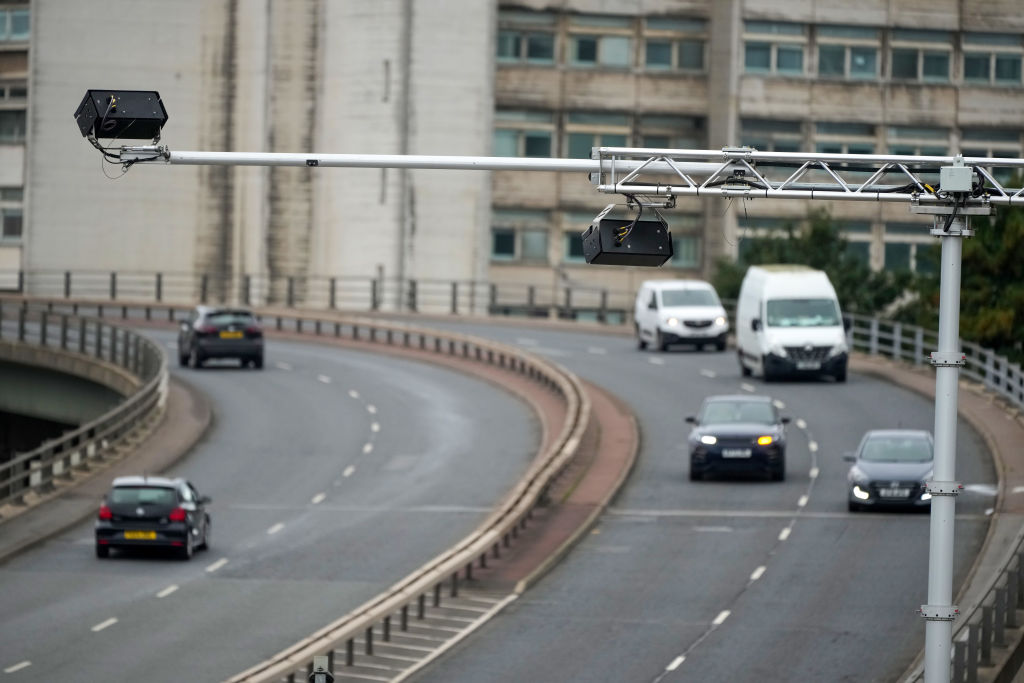The Imph Highway will come with highway sensors, CCTV cameras and virtual indicators.
The Western Australian Government will formally break ground on December 22 for a virgin “smart freeway” consisting of 1,400 virgin production items.
Highway sensors, on-ramp alerts, CCTV cameras with incident detection sensors and overhead gantries are some of the retrofitted applied sciences to be installed in the southbound lanes of Mitchell Highway.
The highway is a large freeway that connects Perth’s northern suburbs to the city center and links to alternative main roads.
Overhead gantries are set to lower speed limits and warn of injuries ahead, life visitor alerts on the on-ramps will lead to a tide of visitors during busy times.
“Depending on where they are traveling from, drivers can expect to save up to seven minutes during the morning peak hour, which ultimately means a safer journey and less time spent in gridlock,” he said. “
Her federal counterpart, Delivery Minister Catherine King, said the government is continuing to invest in infrastructure that makes roads safer and provides Australians with homes for their families.
“Our partnership with the WA Government in delivering these important projects will mean residents in Perth’s northern suburbs will spend less time stuck in traffic and more time with their loved ones.”
The Sly Road Mitchell southbound project, including the Hodges to Hepburn widening and shared trail projects, is funded by both the federal and state governments.
Key features of the unobstructed improvements include 16 on-ramp unobserved visitor alerts to help filter visitors and smooth merging onto the highway, 23 overhead gantries with lane-use and variable speed indicators, and virtual message indicators that guide motorists. Drivers inform visitors. Situations in real presence.
The federal government claims those upgrades to impish highway technologies will save commuters seven minutes during peak rush hour commutes.
Are there any dangers from slick highways?
Despite the benefits of reducing congestion and improving traffic flow, there are some potential safety concerns and dangers associated with poor highways.
One of the main dangers of bad highways can be the hesitation of the driving force due to suddenly changing conditions, if the speed limit is modified for a short period of time and the lanes are opened or closed regularly.
Over-reliance on technology, including sensors, cameras and message indicators, can also be at risk if systems fail or malfunction.
Sly highways additionally rely on data technologies that can be targeted by hackers, making them vulnerable to cyberattacks.
Branch noted, “The smart motorway uses real-time information, communications and traffic control systems to improve traffic flow (just like the M4 and M8).
The NSW Government is installing 19 gantries between the Anzac Bridge and Sydney Harbor Bridge, integrating speed lane usage digital indicators, CCTV and automatic incident detection generation.
“We are installing smart motorway technology on the Western Distributor between Anzac Bridge and Sydney Harbor Bridge,” the federal government said.
AI cell phone detection cameras are located at 5 high-risk locations with danger signs in Adelaide, monitoring 13 lanes.
Sleep at the Wheel on Highway Protection, Cons
Meanwhile, Western Australian Opposition Leader Shane Love recently criticized the Exertion Party’s slow response to urgent road safety reforms.
He said the Cook government continued to display “a lack of leadership and foresight”, acting only after being outmaneuvered by the opposition on key issues, including road safety and construction sector problems.
“It is clear that this out-of-touch government has no intention of taking real action unless forced to do so by the opposition.”
Meanwhile, Western Australian charity leader Libby Mettam is raising concerns about widespread security and crime in the situation, including attacks on human transport.


